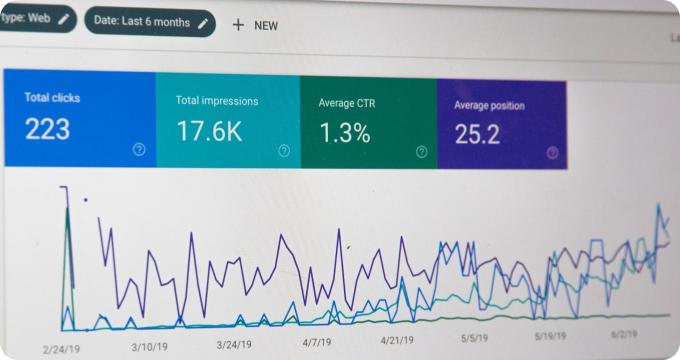The Future of Cloud Gaming Software: Predictions and Emerging Trends
- November 17, 2023
- 2 minutes
In the realm of interactive entertainment, the evolution of gaming technology has made great strides. In recent times, however, one of the most remarkable breakthroughs is the advent of cloud gaming—an innovative departure from the traditional model of purchasing physical or digital games. This new paradigm, which allows gamers to play games directly from the cloud instead of owning them, is redefining the gaming experience. Predictions and emerging trends indicate that this could very well be the future of the gaming industry.
Cloud gaming, to put it succinctly, is a type of online gaming that allows direct and on-demand streaming of games onto computers, consoles, and mobile devices. Similar to the way Netflix works for movies, cloud gaming platforms permit users to play games stored on remote servers, eliminating the need for hardware capacity on the gamer’s end. This shift from local hardware requirements to remote servers has significant implications for the gaming industry and its consumers, specifically in terms of accessibility, cost, and performance.
In terms of accessibility, cloud gaming is a veritable game-changer. The ability to play games anywhere, anytime, and on any device without the need for powerful hardware expands the gaming populace. No longer are serious gamers limited to those who can afford high-end gaming PCs or the latest consoles. With a stable internet connection and a subscription to a cloud gaming service, even a low-powered laptop or smartphone can deliver a high-quality gaming experience.
The cost implications are similarly transformative. The upfront investment in gaming hardware, often amounting to hundreds or thousands of dollars, is a significant barrier to entry for many would-be gamers. With the advent of cloud gaming, these costs can be replaced with a monthly subscription fee, much like a Spotify or Netflix subscription, making gaming more affordable and accessible to a wider audience.
Performance, too, is poised for a significant leap forward. Cloud gaming services employ powerful servers that can provide superior processing power and graphics capabilities compared to most consumer-level hardware. This not only enables smoother gameplay but also opens the door to more complex and visually stunning games.
These factors—accessibility, cost, and performance—present a compelling case for the rise of cloud gaming. However, it would be remiss not to mention some potential challenges. The most significant of these relate to latency and internet connectivity. Latency, defined as the delay between a user's action and the response from the server, can adversely affect the gaming experience. This is particularly critical in fast-paced games where every millisecond counts. However, advancements in edge computing and 5G technology promise to significantly reduce latency times, which could further strengthen the case for cloud gaming.
Similarly, stable, high-speed internet connectivity is a prerequisite for a seamless cloud gaming experience. As such, in regions where internet infrastructure is not robust, cloud gaming might face hurdles. Nevertheless, given the pace at which internet technology is progressing worldwide, one could speculate that this obstacle will eventually be overcome.
The trajectory of cloud gaming is also being shaped by several exciting trends. One of the most prominent is the integration of AI and machine learning. These technologies can enhance the gaming experience by enabling personalized game recommendations, improving game physics, enhancing non-player character (NPC) behaviour, and even creating new content.
Another emerging trend is the convergence of cloud gaming and virtual reality. VR has long been touted as the future of gaming, but its adoption has been hindered by high equipment costs and performance limitations. Cloud gaming could potentially solve these issues by handling the heavy processing in the cloud, thus enabling high-quality VR experiences on affordable, lightweight devices.
As we look to the horizon, the future of cloud gaming seems anything but nebulous. While it is true that there are challenges to surmount, there is every reason to believe that cloud gaming, with its myriad benefits and transformative potential, is poised to become an integral part of the gaming landscape. This revolutionary technology could democratize gaming, making it more accessible, affordable, and superior in performance, thereby changing the way we play and experience games.
Learn More
Unleash the future of gaming by diving deeper into our enlightening blog posts about cloud gaming software. For an unbiased, comprehensive view, they are encouraged to explore our meticulously curated rankings of the Best Cloud Gaming Software.
Popular Posts
-
 7 Compelling Reasons Why You Need Cloud Gaming Software in Your Life
7 Compelling Reasons Why You Need Cloud Gaming Software in Your Life
-
 The Future of Cloud Gaming Software: Predictions and Emerging Trends
The Future of Cloud Gaming Software: Predictions and Emerging Trends
-
 12 Things I Wish I'd Known About Cloud Gaming Software Before Investing in One
12 Things I Wish I'd Known About Cloud Gaming Software Before Investing in One
-
 10 Essential Questions to Ask Before Choosing Your Cloud Gaming Software
10 Essential Questions to Ask Before Choosing Your Cloud Gaming Software
-
 Ask These Questions to a Cloud Gaming Software Provider to Choose the Right One for You
Ask These Questions to a Cloud Gaming Software Provider to Choose the Right One for You






